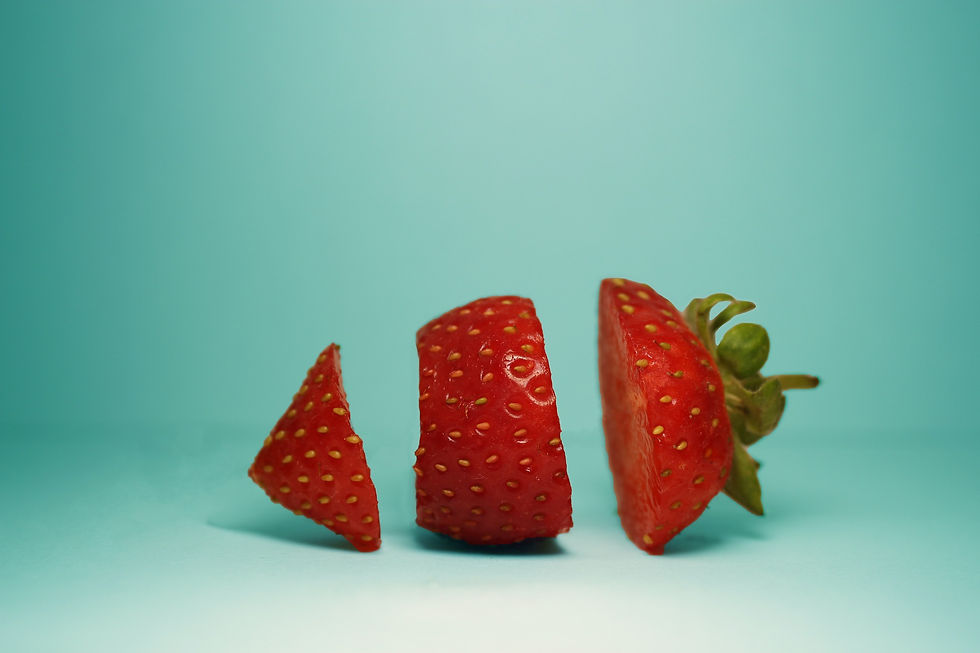Do you find yourself feeling out of control around certain foods? Try this.
- Paige Smathers

- Aug 3, 2016
- 3 min read

“I don’t trust myself around that food.”
If this is something you find yourself saying regularly or if you’ve ever even had that thought, read on.
I can’t tell you how many times I’ve heard this sentiment or something similar in my office sitting across from someone feeling deep shame and guilt about admitting to their struggles with food.
My message is that there is hope! To people who feel their struggles with food are so deep and ingrained that there’s no chance for food peace—there are things you can do to feel less chaotic and out of control around food.
Many people decide to try to completely avoid the food that they feel out of control with. It makes sense at first glance, but if we’re being honest about what restriction ends up looking like, it’s usually the opposite of what you’re going for. Complete restriction usually leads to feeling out of control and deprived—maybe even bingeing.
So how can you work smarter to develop a balanced, mentally healthy relationship with a particular food you’ve struggled with in the past?
It’s all about creating new experiences and associations with those foods. Here are three simple steps to try out to generate positive encounters with foods or treats you struggle with.
Step one: identify a food you view as problematic that you’d like to be able to enjoy periodically, without guilt. This is probably something that’s easy to do and you likely already have the food(s) in mind after reading the first part of this article.
For example, you may have had the experience of eating way too many chocolate chip cookies when they’re in the house. Each time you’ve baked cookies, you’ve found yourself completely sick from eating too much dough and then on top of that, too many warm, fresh cookies. Every time you’ve baked cookies, you’ve ended up with a stomach ache, you’ve regretted making them in the first place and you’ve likely committed to yourself you’re never going to do that again.
Step two: sit down and visualize a positive experience with this food. It might sound a bit new-agey or out there, but this really works. Take a moment to visualize yourself in a vulnerable position around food and imagine yourself pushing aside the thoughts and urges to binge or get out of control with a food, and see yourself with your mind’s eye making a different choice.
Using the example above, imagine yourself on a rainy day where you decide you’d like to make cookies. Imagine yourself combining the ingredients to make dough. See yourself enjoying the process and taking in the experience. Think about how you will experience urges to sneak, binge or overeat the dough but imagine yourself just taking a little bit. Contemplate about how you will make a different choice and listen to your body’s cues of when to stop. Then, imagine those warm, freshly baked cookies and think about how you will eat just one and truly enjoy the experience.
Step three: act out what you’ve visualized. Now is the time to create a positive experience to associate with a food that you’ve struggled with before. As much as possible, clear your life of potential triggers even if it’s for the half hour you’re doing this exercise. Put aside the fears, worries, past experiences, emotions of the day and just make a positive experience happen.
Once you’ve successfully eaten a small amount of cookie dough and just one warm baked cookie, the next time you’re in that same situation of baking cookies, you will have real experience to draw from that will remind you that you are capable of making different choices. There is so much power in building new connections in your brain by having positive experiences, especially when it comes to food.
It’s easy to believe there’s no chance of being able to practice portion control around your favorite treats especially when every time you’ve been around that food you’ve ended up feeling sick, guilty and completely out of control. But, there’s hope. It’s all about creating new experiences and associations with that food. Try it! You’ll love being able to truly enjoy an indulgence and stopping at “just one” will feel so much more achievable.
This article was originally published on KSL.com







Kaiser OTC benefits provide members with discounts on over-the-counter medications, vitamins, and health essentials, promoting better health management and cost-effective wellness solutions.
Obituaries near me help you find recent death notices, providing information about funeral services, memorials, and tributes for loved ones in your area.
is traveluro legit? Many users have had mixed experiences with the platform, so it's important to read reviews and verify deals before booking.